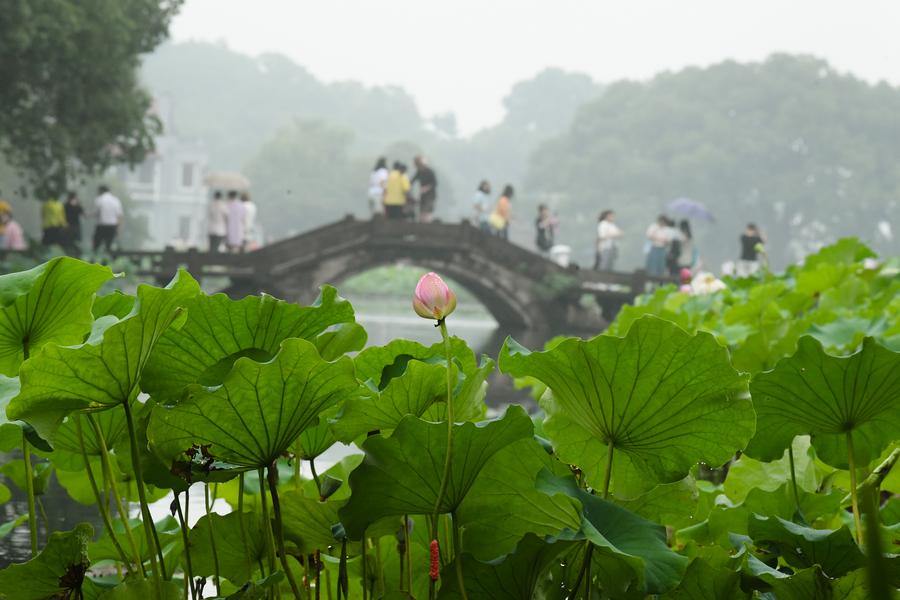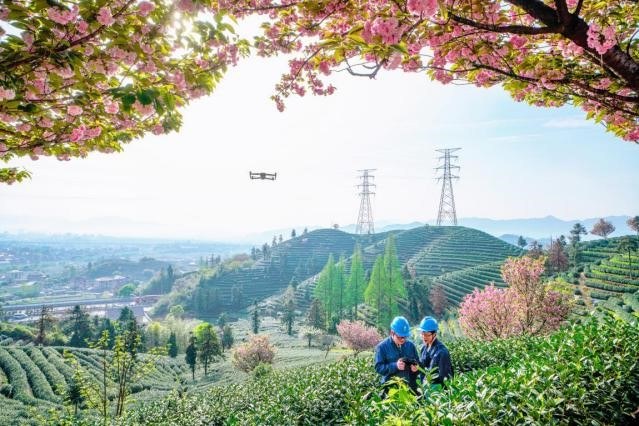Ethnic minority culture is an important part of traditional Chinese culture and each ethnic group has made unique and vital contributions to the glorious Chinese culture. The Zhejiang Province contains fifty-six ethnic groups. The native minorities of the She, Hui and Manchu have lived in Zhejiang for generations, while the other ethnic groups settled in Zhejiang for work, business and marriage after 1978 when the Reform and Opening-up Policy was implemented.
She Ethnic Group
The She people are the majority population of minority groups in the Zhejiang Province, mainly scattering around Wenzhou, Lishui and Jinhua. They live apart in mountainous areas or among Han people. Jingning She Autonomous County is the only area administered by the She People and the only minority autonomous county in east China. During the Tang Dynasty (618 AD-907AD) and Song Dynasty (960 AD-1279AD), She people migrated from Guangdong and Fujian to southwest Zhejiang. The Han people had already occupied the fertile land, so She people mainly settled in the mountainous areas and took up traditional slash and burn farming to survive. She people call themselves “Shan Ha”, which meant guests of the mountainous areas.

For thousands of years the industrious She people have created a unique ethnic folk culture. Their traditional clothing, ribbons, embroidery and knitting allow us to explore the glorious and characteristic She ethnic group culture. The traditional clothing of She people is an example of colorful Chinese intangible cultural heritage. She people dye flax a dark blue and make clothes out of it. The unique clothing style is mainly embodied in women’s clothes, especially in the designs of the legendary phoenix. She women often wear a phoenix coronet and silver hairpins.
The She people have their own language, which is closely related to the language of the Yao people belonging to the Chinese-Tibetan language family but they do not have their own written language. Most She people live among Han people, so in daily they communicate both in their own language within their group and the local dialect of the Chinese language with the Hans.
Hui Ethnic Group
The Hui ethnic group can be found in most counties and cities throughout China. However, the Hui population in the Zhejiang Province is quite small, mainly scattered around Wenzhou, Hangzhou, Jiaxin, Quzhou and Ningbo.
The Hui people live together with the Han people but most believe in Islam and are Muslims. They build a mosque if there are many Hui residents in the area and never eat pork or drink the blood of any animal, in accordance with their religious beliefs. Their religious freedom, customs and habits are respected and guaranteed by law.
The name Hui is an abbreviation for "Huihui". The Hui ethnic group absorbed the customs and traditions of Han, Mongolian and Uygur ethnic groups but formed their own unique lifestyle and clothing. Islam deeply influences the life style of the Hui people. Men tend to dress in white or black and wear a small white hat, while women wear a headscarf in black, white or green.
Manchu Ethnic Group
Manchu is also known as Man Zhu, which means “auspicious” in the Manchu language. The Manchu are the descendants of the Jurchen, an ancient fishing and hunting tribe from northeast China. The population of Manchu people in the Zhejiang Province is more than 10,000 mostly in towns and cities.
The Manchu language originates from the Jurchen language. Nowadays, the majority of Manchu people speak Mandarin Chinese, while only some language scholars and some villagers in northeast China still speak the Manchu language. In 1947 some Xibe intellectuals from the Xinjiang Province reformed the Manchu language and created a new language branch called Xibe. Thus, Xibe people learn the Manchu language and still use it today.
The Manchu people are gifted archers and horsemen. Some Manchu people still practice shamanism. They worship eagles because they admire the courage of eagles and desire to be as tough as an eagle. The Manchu’s worship of eagles can been seen from excavated eagle bone carvings dating back 6,000 years. Manchu folk songs with lovely melodies and simple lyric come in various forms and depict daily and military life.
(Executive Editor: Yongliu HE)




